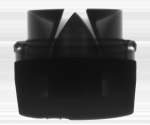Here's a page from a 1977 Urei catalog showing pulse and square wave traces...
I see my super Urei monitors linked again a couple pages back too.
And I also posted a new pair of 615B drivers with time aligned networks using the Don Patten circuit. It's basically the classic Ed Long TA circuit adjusted for the shorter offset of the 605 motor assembly. Whether or not those circuits are truly time aligned, they are a huge improvement over non-aligned notworks.
eso





 Reply With Quote
Reply With Quote



